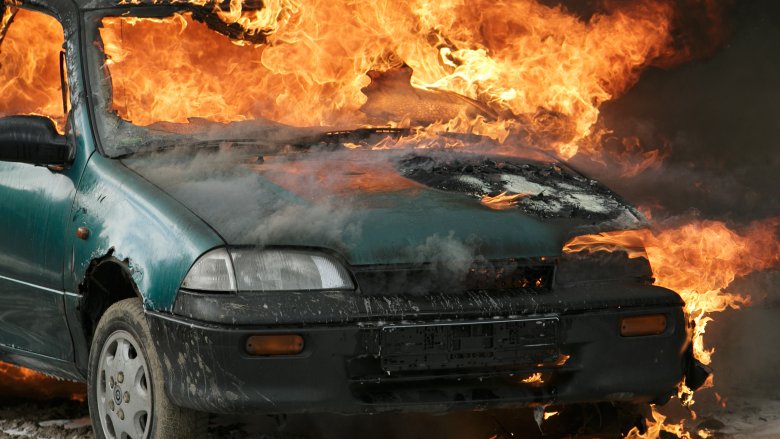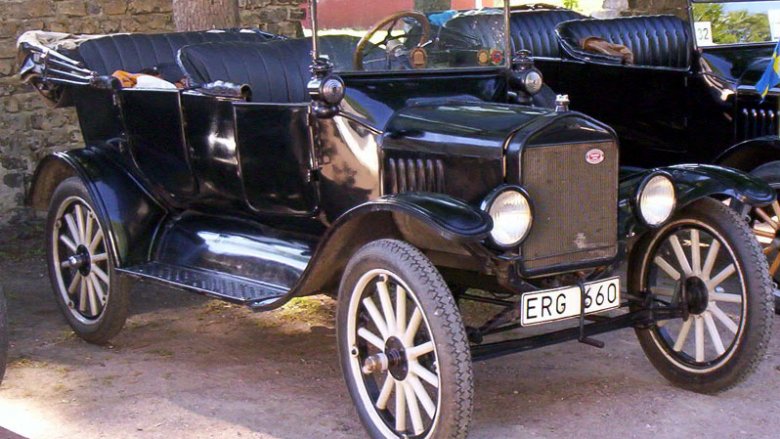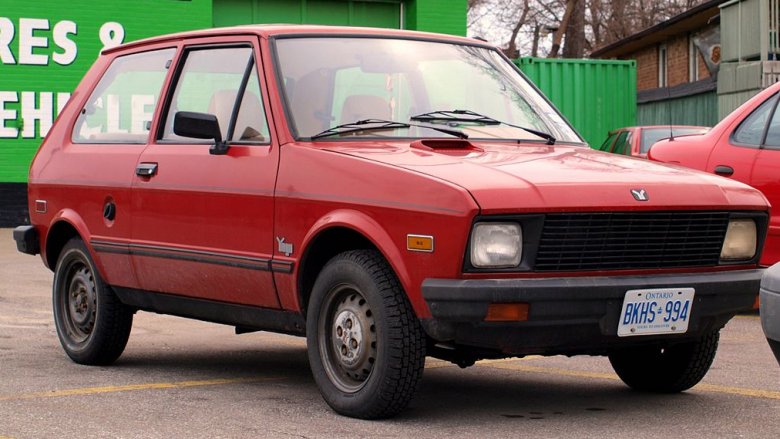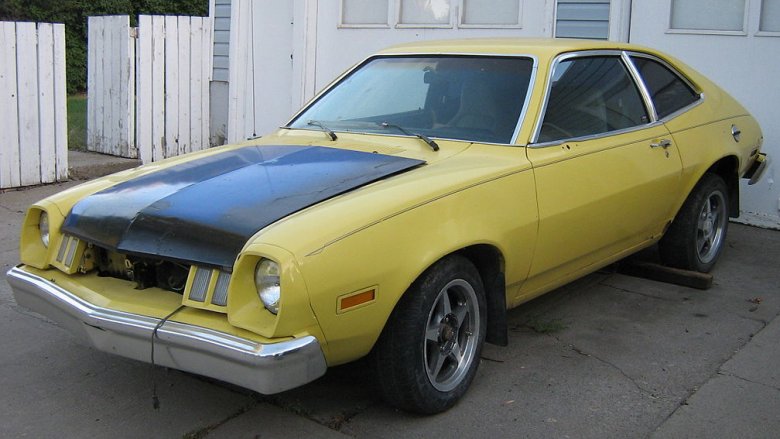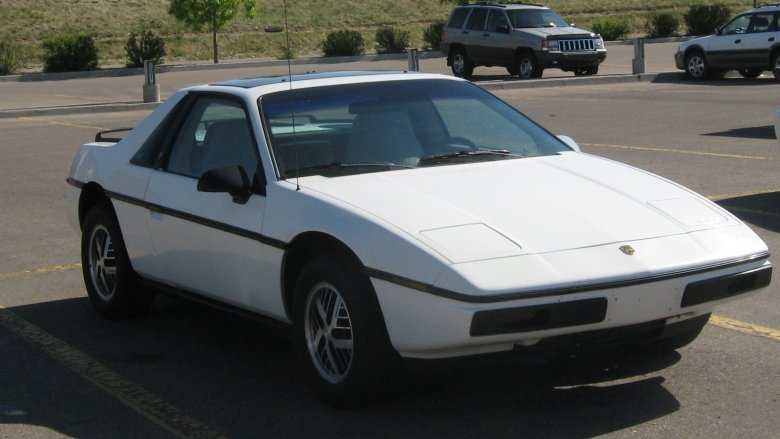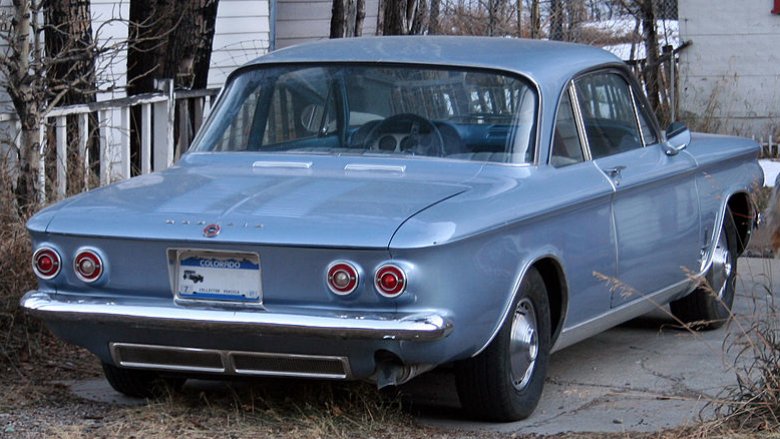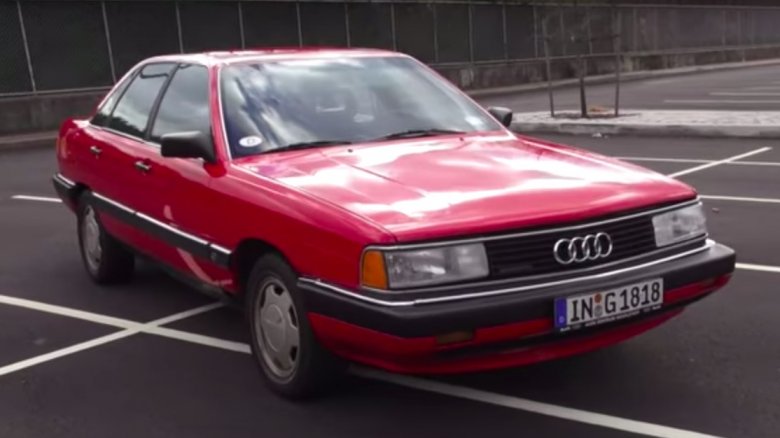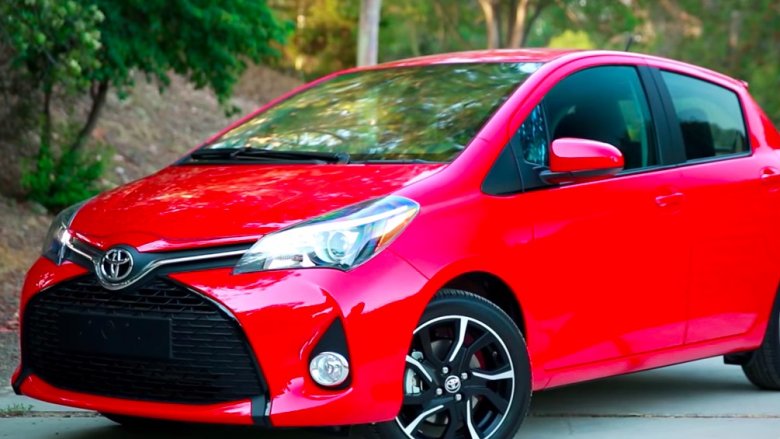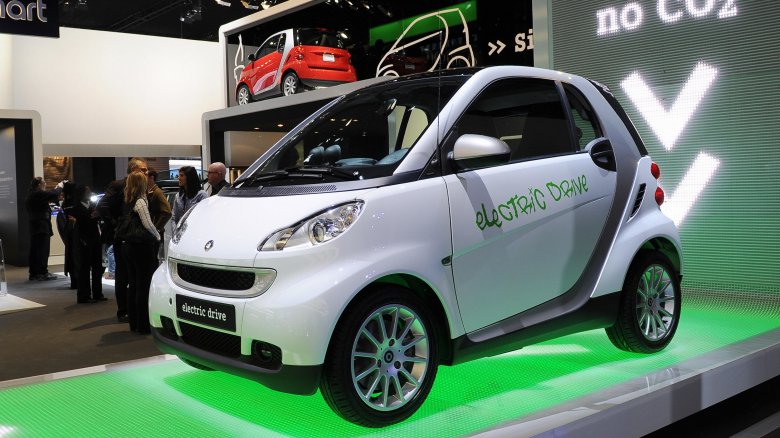The Deadliest Cars Ever Made
To create this list of history's most dangerous cars, we have examined reams of safety documents and spent hours querying the national database on auto accident statistics. We've exhaustively compared different makes, models, and trim packages. We even conducted interviews at Jiffy Lube. Here we present our findings — annotated!
Just kidding. We wouldn't want to bore you like that. This is actually a fairly non-scientific trek back through automotive history, which is based almost entirely on anecdote and people's opinions. It's all got truth, though. Throughout recent history, there have been some pretty ridiculously dangerous cars driving around our roads, and the most dangerous of all are usually being driven by oblivious people who have no idea just how dangerous their cars actually are. So you may need to prepare yourself for this foray into the terrifying world of really crappily designed automobiles, perhaps with a cup of tea and maybe a new insurance policy. But in the meantime, try to remember, at least we have airbags now.
The car that revolutionized death and dismemberment
You might think we live in a scary time, from an automotive perspective. The Insurance Institute for Highway Safety says there were more than 34,000 fatal car crashes in 2017, or roughly 11 deaths per 100,000 people. That sounds crazy, but for a second try to put yourself back in the early 1900s, when everyone was discovering the joys of car ownership and there were no stop signs.
By the 1920s, more than half the cars on the road were Model Ts, which featured a gas tank located under the seat and windshields made out of flat glass that would eviscerate you if you happened to run into another Model T at an intersection. Also, driving a Model T was beyond complicated — you controlled the throttle with a lever, you managed the "spark advance" using another lever, and then somehow you also had to steer the thing. There were three pedals: a clutch, a brake, and a pedal for changing gears. And there was that hand crank, which could kick back and break your arm if the car backfired while you were just trying to turn the thing on.
Also, there were no real road rules, no driving schools, no seatbelt laws, no seatbelts at all, actually, and most importantly, roads full of idiot drivers. In 1917, there were more than 7,000 car accidents in the city of Detroit alone. By comparison that makes texting and driving look like a small problem. (It's not a small problem, but just think how far we've come.)
Light as a feather is really not a great quality in a car
In the '80s, the Yugo GV was inexplicably popular despite being like the ugliest car anywhere. Perhaps it was the entry price of just below $4,000, which made it one of America's cheapest cars (the GV stood for "Great Value"), or perhaps it was the fact that it was manufactured in Soviet-bloc Yugoslavia. During the Cold War, that probably gave it an air of danger, which is ironic when you consider how actually dangerous it was.
The car was cheap both in price and in design, and it was so light that LA Magazine says a 55 mph gust of wind once blew one over the edge of the Mackinac Bridge in Michigan, killing its driver. It was also slow, reaching 60 mph in about 14 seconds. Those things alone were maybe not enough to make it one of history's deadliest cars, but it also did poorly in crash tests, which is not surprising for a car that was so light it could literally blow away.
The handling was crap, too. After test-driving an old Yugo, one writer said this: "A car with a nice, comfortable ride usually has vague, disappointing handling; a car with a harsh ride usually has quick, sporty steering. But somehow, the Yugo's creators blessed it with both a harsh, jarring ride and poor steering and handling." And it was super ugly, so the Yugo just all around had nothing to recommend it.
Pinto go boom
Popular Mechanics called this '70s-era car "the best example of what happens when poor engineering meets corporate negligence." Like the Yugo, the Pinto was designed to be light and cheap. It was also pushed to market really quickly, with a delivery deadline of just over two years.
But before this car even reached the dealerships, developers learned it was a death trap. It didn't take an especially high-speed collision to damage the gas tank filler neck, spilling fuel under the car, and the tank was also vulnerable to becoming punctured by all the myriad bolts that surrounded it. So engineers were like, "Okay, let's fix it." They suggested a redesigned tank, or a shield that could protect the tank in a collision. The fixes would have cost around $11 per vehicle, but here's the really villainous part of the story: Ford was all, "Nah, it would be cheaper to just get sued." Yes, they actually sat down and ran the numbers: $113 million to make the tank safer, $49 million in death and dismemberment lawsuits ... no brainer, right? Well, except for all the dead people, but that's business.
So Ford released the Pinto, and people started dying, just as predicted. The official numbers show 27 recorded deaths due to explosive fires, but the number grew twice as large when the car's terrible transmission problems were included. It's not a huge number given that there were 2.2 million Pintos on the road at one time. But still (and we know it's quaint), most people are of the opinion that one preventable death is too many.
It's only a little engine fire
Mythbusters once busted the myth that cars are explosion prone by nature, but you'll be forgiven for thinking they are just based on Hollywood and cars like the Ford Pinto and the Pontiac Fiero. Because although cars in general usually won't explode even while careening down a cliff, some are so poorly designed that catching on fire occasionally was almost a normal operating function.
The Pontiac Fiero was one such car — according to Car Buzz, the Fiero inherited an older engine that had to be slightly redesigned to make it fit, but engineers failed to also redesign the dipstick, so Fiero owners were fooled into thinking oil levels were a-okay when they were actually about a quart low. So that was not great, but up to 40 percent of all Fieros also had defective connecting rods, and those two problems combined would often cause engine fires. But that wasn't the only potentially flammable problem — there was also a wiring harness just above the exhaust manifold that would occasionally melt and then burst into flames, and loose head bolts could also crack and (you guessed it) start fires.
Fiero engine fires weren't just an occasional thing, either. By 1987, around 20 Fieros were catching fire every single month. And even though no one died and it was really just the 1984 model that had these problems, consumers started to become understandably wary about buying Fieros; GM ended production in 1988.
It's fine as long as you never exceed 30 miles an hour and mostly avoid turning
The Environmental Working Group once joked that SUV stands for "Suddenly Upside-down Vehicle," which would have been amusing if there weren't so many dead people in all those rolled-over SUVs.
The Bronco II, which came out in 1983 as a response to the gas shortages of the late 1970s, was one of the worst offenders. It was designed to be a smaller and lighter version of the Bronco, which sounds great in principle but was kind of not great when it came to the part where people had to actually drive it in real-world situations.
The Bronco II, as it turned out, had a tendency to roll over even at pretty modest speeds. And there's evidence that Ford knew about this as early as 1981. In fact, they were so informed about the problem that they actually canceled their own safety tests because they were concerned for the safety of the test drivers. That concern did not extend to actual consumers, though, and hundreds of people were killed between 1983 and 2001 when Bronco IIs and Ford Explorers (which was basically just a modestly redesigned Bronco II) were involved in rollover accidents.
Ford engineers suggested widening the vehicle track by 3 or 4 inches to improve stability, and Ford was all, "Nah, it would be cheaper to just get sued," because their earlier missteps evidently taught them nothing.
Not great for the average driver, which was pretty much everyone
Ralph Nader famously described the Chevy Corvair as a "one-car accident." In his 1965 book Unsafe at Any Speed, Nader turned the car into a scapegoat for every flawed car that has ever existed, so it's tempting to say that the Corvair really wasn't that bad, except that it still was pretty bad.
According to Road and Track, the early model Corvair featured a weirdly-designed suspension that gave the wheels a dramatic tilt, so if the driver tried to turn quickly, the car would fishtail. The Corvair could also roll over, which happened infrequently but was still a dangerous possibility. Fishtailing alone wouldn't be a problem for a skilled driver who had the tires inflated correctly, but in the 1960s the average driver was just about as skilled as today's average driver (not very) and no one has ever paid attention to their tire pressure in the history of cars.
By the time Nader's book was released, though, the Corvair had been redesigned to address the flaws that had made it the subject of 100-plus lawsuits. So it was no longer super dangerous, but that didn't stop GM from responding to the negative press in the most obnoxious way ever. Perhaps they felt the only thing they could do to fight back was tap Ralph Nader's phone and scandalize him by having prostitutes attempt to seduce him while he was grocery shopping. And they also kept the Corvair around for a lot longer than they probably otherwise would have, just so no one could accuse them of admitting that Nader had a point.
Sudden stepping-on-the-wrong-pedal
It might surprise you to hear that "sudden acceleration" was never actually a thing, at least not in the sense of someone just driving along and the car suddenly just accelerating out of control of its own volition. But still, the car that is most associated with this particular problem is the Audi 5000, and the design problems it had were pretty dangerous, even if they didn't technically cause it to behave like a 1958 Plymouth Fury, although granted the only Fury that ever did that was the one in that Stephen King movie. That we know of.
Anyway according to Car Connection, the Audi 5000 was involved in a number of horrific accidents, including one high-profile case where a woman ran over her own child. And its reputation was further sullied by a 60 Minutes story that aired about the incidents, which was especially outrageous because 60 Minutes couldn't actually replicate the problem in their own testing. So instead, they just rigged an Audi 5000 to accelerate out of control for the camera. Nice.
Even though it wasn't quite as dramatic as 60 Minutes wanted you to think it was, the 5000 still had a pretty serious flaw — the National Highway Traffic Safety Administration concluded that the accelerator and brake pedals were so close together that drivers kept mistaking one for the other. Which sounds considerably less-bad, but it still resulted in an awful lot of horrible accidents.
Dangerous things come in small packages
Modern cars are, on the whole, a lot safer than early cars were. Airbags and seatbelts are standard now, and at some point the powers that be learned that stop signs and speed limits were pretty good ideas. But some modern cars are considerably more dangerous than others, and if you're in the market for a new car it's worth knowing how the one you've got your eye on compares to other cars on the road today.
A relatively modern example of a car that's really not very safe is the 2009 to 2011 Toyota Yaris. The first strike against these cars is their size — in 2012, the Los Angeles Times said people traveling in the tiny, subcompact Yarises were a lot more likely to be injured in a crash than passengers of other cars. The stats were ugly, too. For every 1,000 insured Toyota Yarises of these years, personal injury claims were filed 28.5 times.
That data did appear to be in conflict with the Insurance Institute for Highway Safety — in 2012 they named the Yaris one of their "top safety picks." Those ratings are based mostly on crash tests, though, and Highway Loss Data Institute senior vice president put it this way: "Injury claims data show something that crash test results can't, and that's the role that vehicle size plays." In other words, if you're looking for a safe vehicle, maybe avoid very small models.
But oversteering is fun
One of the things fans loved about the Porsche 911 was also one of the things that made it dangerous for the average driver — like the Chevy Corvair, the early Porsche 911 had a tendency to oversteer, which was super fun if you knew what you were doing and lethal if you were a less-than-confident driver.
A 1970 issue of Car and Driver lamented that Porsche added a "camber compensator" to the 1967 model to address the oversteering problem. The suspension was redesigned, too, and Porsche famously added an iron weight behind the bumper to help prevent fishtailing. That "made Porsches behave like normal, front engined cars," and die-hard Porsche fans did not approve.
"Sure, understeer is safe" Car and Driver said, "but oversteer makes driving fun ... if you're expert enough to handle it." The problem was that average drivers weren't expert enough to handle the 911 and were sometimes buying Porsches for all the wrong reasons, such as "Look how awesome I am, ladies, I drive a Porsche." Anyway, after fans complained, Porsche actually went back and made the car oversteer again, but it's okay because they added a warning to the brochure that read, "This is no car for a novice." Which we're very sure kept all those novices away from the Porsche dealerships for good. Hey, at least they were up front about it, and at least no one could in any way take that warning as a challenge.
Good things don't come in tiny packages, either
You probably remember your first thought upon seeing your first Smart Car: "Dang, that thing looks like a death trap." Right? Because the Smart Car makes the Toyota Yaris look like a Hummer.
According to Oregon Live, the Smart Car is "jarringly stupid on safety," which come on, is anyone really that surprised? Really? In 2009, the Insurance Institute for Highway Safety (IIHS) tested the Smart ForTwo against a midsized C-Class Mercedes Benz. We probably don't have to describe what happened to the Smart ForTwo, but think of a soda can in a trash compactor. An airborne trash compactor.
"I think everyone knows you don't send a flyweight into the ring against a heavyweight," the president of the IIHS told the Wall Street Journal, "but in this case the larger cars aren't heavyweights."
The Smart Car was originally designed for fuel economy, and it did get awesome gas mileage — about 40 miles per gallon. It was inexpensive, too, with a sticker price of around $12,000, though consumers did have to weigh all of that against, you know, dying. Today you can get an electric version of the Smart Car, though one must really ask, why? The whole reason for having a stupidly tiny car was fuel economy, but if you're going to be all electric anyway, you maybe just want to get a car that's not nicknamed "the organ donor."
A really expensive death trap
When you pay £170,000 for a car, you have a number of expectations. One, it should look like something you spent £170,000 on. Two, it should mostly not ever burst into flames.
Those are fairly minor expectations, aren't they? Because imagine the technology, engineering, and craftsmanship that goes into building an expensive car — it can't all just be about power, acceleration, and "Hey look at me, ladies, I'm driving a £170,000 car!" Can it?
Well, according to the Guardian, in 2010 Ferrari recalled the 458 Italia because like a few others before it, it had a bad habit of bursting into flames. The trouble began in Paris — because where else — when an Italia caught fire and had to be put out by a good Samaritan with a fire extinguisher. Then one caught fire in the Swiss Alps, and another one in China, and another in the U.S. When engineers looked into the problem, they discovered they'd used a flammable adhesive in the wheel arch. Doh!
That's also not the only problem with the Italia — evidently, they are also prone to being driven by idiots. A website called Wrecked Exotics reported six Italia crashes in 90 days, which would be astonishing for any car, but it's pretty stunning when you consider how few of these things are actually on the road. It's a good thing that people who can afford a £170,000 car can also afford awesome insurance.
